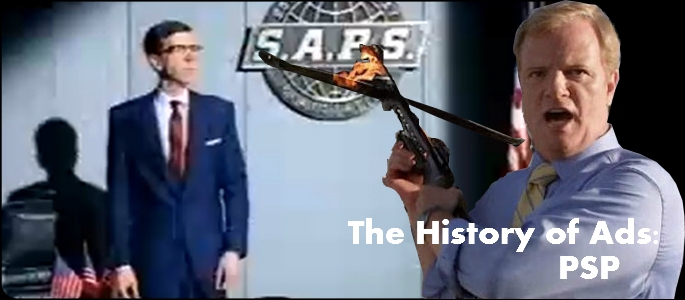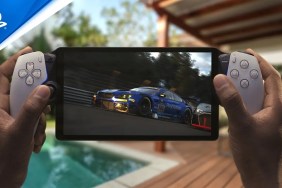Be sure to first read the history of PSOne and PS2 ads.
Sony’s entry into the handheld market was set to be one of the most controversial console pushes in history. The degrees to which Sony tried to push the boundaries of what is acceptable publicity had government officials and racial rights groups actively speaking out against the company. Most people joke about how pathetic Sony’s advertising had been for the PSP, but often do not realize that the company encouraged suicide, ruined property, and gave YouTube one the stupidest videos ever made.
The first set of PSP commercials were designed to appeal to an older and busier demographic of gamer. They tried to portray that, with the power of a PlayStation branded handheld, you would be able to bring a gaming experience like nothing else with you no matter where you went. Whether it would be at the beach, getting your hair done, or even driving. Even though these commercials seemed to resonate well with their audience, they didn’t push the kinds of sales Sony had been hoping for. But given that the competing Nintendo handheld was $100 cheaper and had better brand recognition, it would be misguided to blame the poor sales solely on the PSP’s Marketing campaign.
In the UK, Sony hired directors Alex Rutterford and Chris Cunningham. both of which were well known for their work on a number of major music videos. The ad originally had music by Coldcut, but was later removed for a less abrasive sound.
One of the earliest taglines for the PSP was the “come out and play” slogan, which was represented by a number of roughly drawn animated commercials. Each commercial ran under the same guise of having a portable version of what ever item was featured in the video. This was obviously to represent Sony’s new portable handheld and show its audience they can now play outside. These commercials had a short run and were not received particularly well, other than being another line of annoyingly memorable Sony ads. An Idiot Abroad star Karl Pilkington voiced the end of the UK version.
One commercial by Sony had the hit musician Kenna performing “Out of Control“. Strangely enough, some viewers may recognize the lead female in the video as Isabel Lucas, of Transformers: Revenge of the Fallen fame.
Just in time for Christmas of 2006, Sony hired marketing company Zipatoni to produce a viral video and blog (now oddly a Haagen-Dazs site)titled “All I Want for Xmas is a PSP” pretending to be a fan’s wish to get a PSP for Christmas (as well as fake comments). The campaign was met with a great deal of heat as the viral campaign was easily traced back to Sony. As coverage of the awful execution of the ad became spread across the internet, Sony was eventually forced to publicly admit that they were the “clever” minds behind the ruse. Zipatoni were later sued by an ex-employee after his name was used to register the site and he was therefore blamed for the terrible ad.
As Sony brought out its slim version of the PSP (PSP-2000) it started up its newest campaign slogan, “Dude get your own”. With the launch of the tagline came a series of commercials starring B.J. Bales, who played an over zealous gamer. While the commercials seem to be trying to hype its audience up, Bales’ character is shown being a menace to anyone he sees with a PSP. Nothing that is portrayed in the commercial would give its audience any semblance of why it would be beneficial to be gaming in public.
The UK started off with far less annoying commercials:
For the release of the PSP 3000, Sony started showing commercials of its revised handheld being played in various locations around the world. This was the basis that was used to promote the “EVERYWHERE JUST GOT BETTER” tagline. The commercials were simple in design, but showed the portability of the console while allowing actual gameplay to be shown; something that had been sadly lacking in its previous ads.
[youtube]http://www.youtube.com/watch?v=5uRLrFIr-fA[/youtube]
In Europe, Sony started to show a commercial that covered the new apps available with the catchy line “THE WHOLE WORLD IN YOUR HANDS”.
This new campaign had driven Sony to start up a new viral video. They gave Don’t Panic Marketing one week to produce a video that would was supposed to convey their new marketing slogan. Strangely, the video was taken down after being seen 178,000 times, but has been restored for posterity.
Unveiled at E3 in 2010, Sony chose child actor Bobb’e J. Thompson to portray Marcus Rivers. Marcus was supposed to be urban youth who would tell people to “STEP YOUR GAME UP”, in an attempt recapture the success of the PS3s fictional figure head, Kevin Butler. Sadly, the commercials never caught on, and soon became another stagnant campaign for the PSP.
Eventually the campaign phased out the Marcus Rivers character, but continued the “Dear PSP” concept.
In Europe, Sony launched a budget version of the PSP last November, which went on sale for €99. This model, which is called the PSP-E1000, was lightly redesigned to be a cheaper budget system.
Sony’s advertising was not limited to commercials and video ads, they had a number of guerrilla marketing methods as well as standard marketing techniques. In 2005, Sony hired graffiti artists around the world to tag seven major cities throughout the US. This led to some controversy as government officials filed cease and desist papers, even though Sony had paid for the rights to tag the buildings.
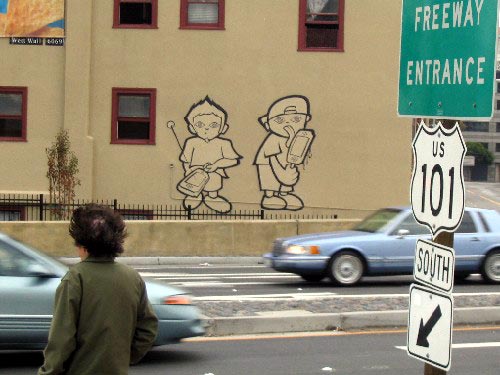
On top of a all the risky ads that Sony has implemented advertising the PSP, there was a short period in 2006 where they had actually advised people to jump in front of trains and buses. The ads were placed outside of bus-stops and train stations, stating for people to “TAKE A RUNNING JUMP HERE”. Shortly after, the ads were pulled for fear that people would actually commit the suicidal acts they were recommending.
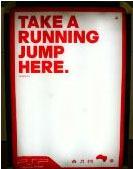
In the Netherlands, Sony attempted to advertise the release of the new ceramic white PSP slim, but created one of the biggest advertising controversies in recent memory. The blatant issues that would follow when Sony used racial contrasts to advertise that “white is coming” must have been obvious, yet the fact that Sony had ran this advertisement showed that the marketing team behind Sony is knowingly putting itself in the media’s cross-hairs.
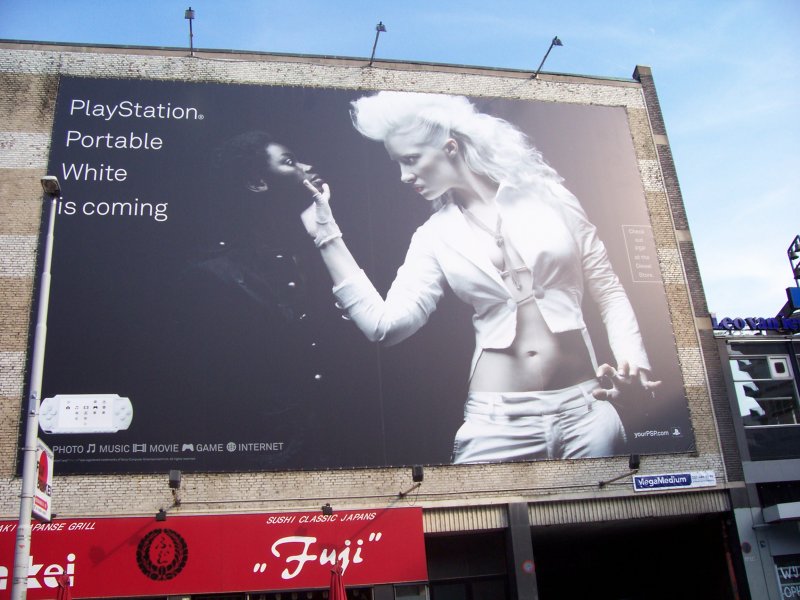
Stay tuned to PSLS to see the advertising campaign for Sony’s least successful PlayStation, the PS3. For more confusing PSP ads, check out the second page.
